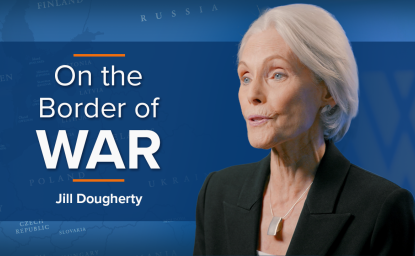Many Americans reminisce about the 1950s and 1960s as a kinder, simpler time but this supposedly golden era was not always kinder or fair to all. While a growing infusion of federal resources and regulations was aimed at stabilizing and reviving the U.S. economy since the 1930s, many of the opportunities created by public initiatives were not extended to minorities and women.
Wilson Center Fellow David Freund is working on a new book that examines the role federal policy played in shaping the economy from the 1930s – 1970s. To be titled, Market Mythologies: Policy, Growth, and Inequality in Modern America, the book will delve into mythical narratives about wealth and inequality. At its core, he said, is the myth that "unimpeded markets, free from government intervention, determined winners and losers in post-World War II America."
In fact, scholars have shown that the federal government has been heavily involved in the economy since the 1930s regardless of which party was in office, said Freund. History points to numerous instances of direct and indirect government involvement that fostered growth, he said. Meanwhile the many federal regulatory and spending initiatives—in areas including housing, education, agriculture, the military, and business-creation—that drove post-war growth also condoned, and often endorsed, discrimination against select populations.
His earlier book, Colored Property: State Policy and White Racial Politics in Suburban America, described how the Cold War-era white middle class flourished and invested heavily in the idea of the free-market while overlooking the government's role both in creating affluence and in segregating housing, educational, and employment opportunities.
For example, since the 1930s, the government created powerful programs that facilitated widespread home ownership, by insuring mortgages and pumping millions of dollars into the market, especially after World War II. Unfortunately, the programs rarely if ever supported lending to minorities, even within their own communities. Policymakers and housing economists agreed that extending credit to minorities or to single women was "a risk that would disrupt otherwise robust growth in the housing sector" he said.
By the late 1960s, said Freund, the government acknowledged it was wrong to exclude minorities and attempted to support minority ownership. But by then the government had fundamentally altered its role in the housing market, and the financial structure of that market was transformed by deregulation. One result was that many of the minorities and single women who now had access to mortgage loans entered the market on less generous terms and, critically, the market itself was much more susceptible to speculative excess, he said.
Freund's new book builds on these themes, looking at a range of federal initiatives that shaped economic opportunity in the last century. He said, "A history of federal policies in different arenas, from housing to banking to urban renewal to welfare, challenges the conventional wisdom of how and when the public sector shaped economic outcomes, and who benefited when it was involved."
In moving forward from here, Freund said, "We need to have a realistic, historical, truthful discussion of the impact the government has had in the past, and use that to engage the debate over what interventions would now be appropriate and fair."


